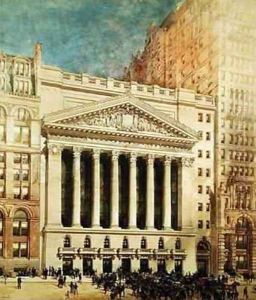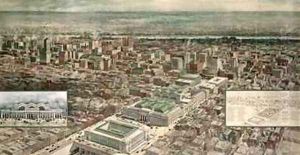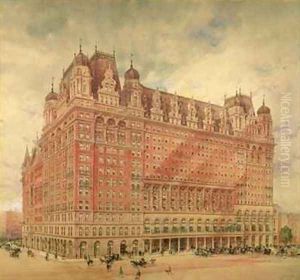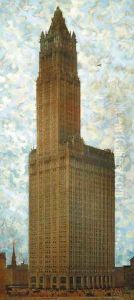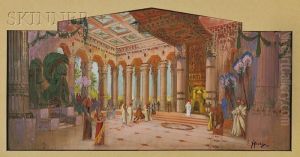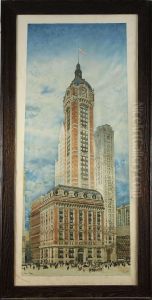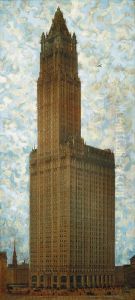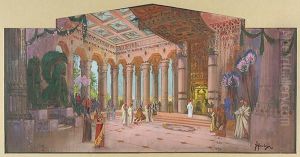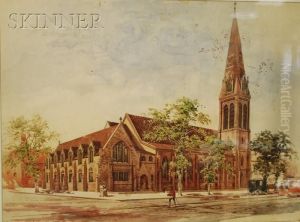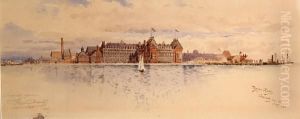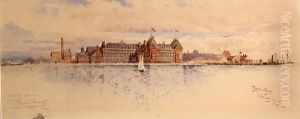Hughson Hawley Paintings
Hughson Hawley was an English-born artist known for his architectural drawings and watercolors, particularly of historical buildings and urban views. Born in Yorkshire, England, on July 28, 1850, Hawley's interest in art and architecture was evident from a young age. Initially, he worked on local architectural projects in England, honing his skills in drawing and understanding architectural forms.
In 1879, seeking broader horizons and opportunities, Hawley moved to the United States. He settled in New York City, a burgeoning metropolis that offered ample inspiration and employment opportunities for an artist with his particular talents. Hawley quickly became known for his detailed and precise renderings of buildings, both existing and proposed. His works were not only appreciated for their artistic quality but also for their historical value, capturing the evolving face of New York City and other urban landscapes during a period of rapid change.
Throughout his career, Hughson Hawley contributed illustrations to several publications and was commissioned by architects and developers to envision the future of new buildings and urban planning projects. His illustrations often appeared in prominent newspapers and magazines, helping the general public visualize the architectural future of their cities. Hawley's work was characterized by a meticulous attention to detail and a keen sense of perspective, which made his drawings both accurate and aesthetically pleasing.
Despite the emergence of photography as a tool for documenting architecture, Hawley's skills remained in demand. His ability to imbue architectural sketches with a sense of atmosphere and emotion set his work apart from mere photographic representation.
Hughson Hawley continued to work and reside in New York City until his death on October 1, 1936. His legacy includes a vast collection of drawings and watercolors that provide a valuable visual record of architectural history in the United States and England during the late 19th and early 20th centuries. Today, his works are held in various public and private collections, testament to their enduring appeal and historical significance.
